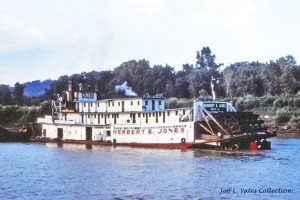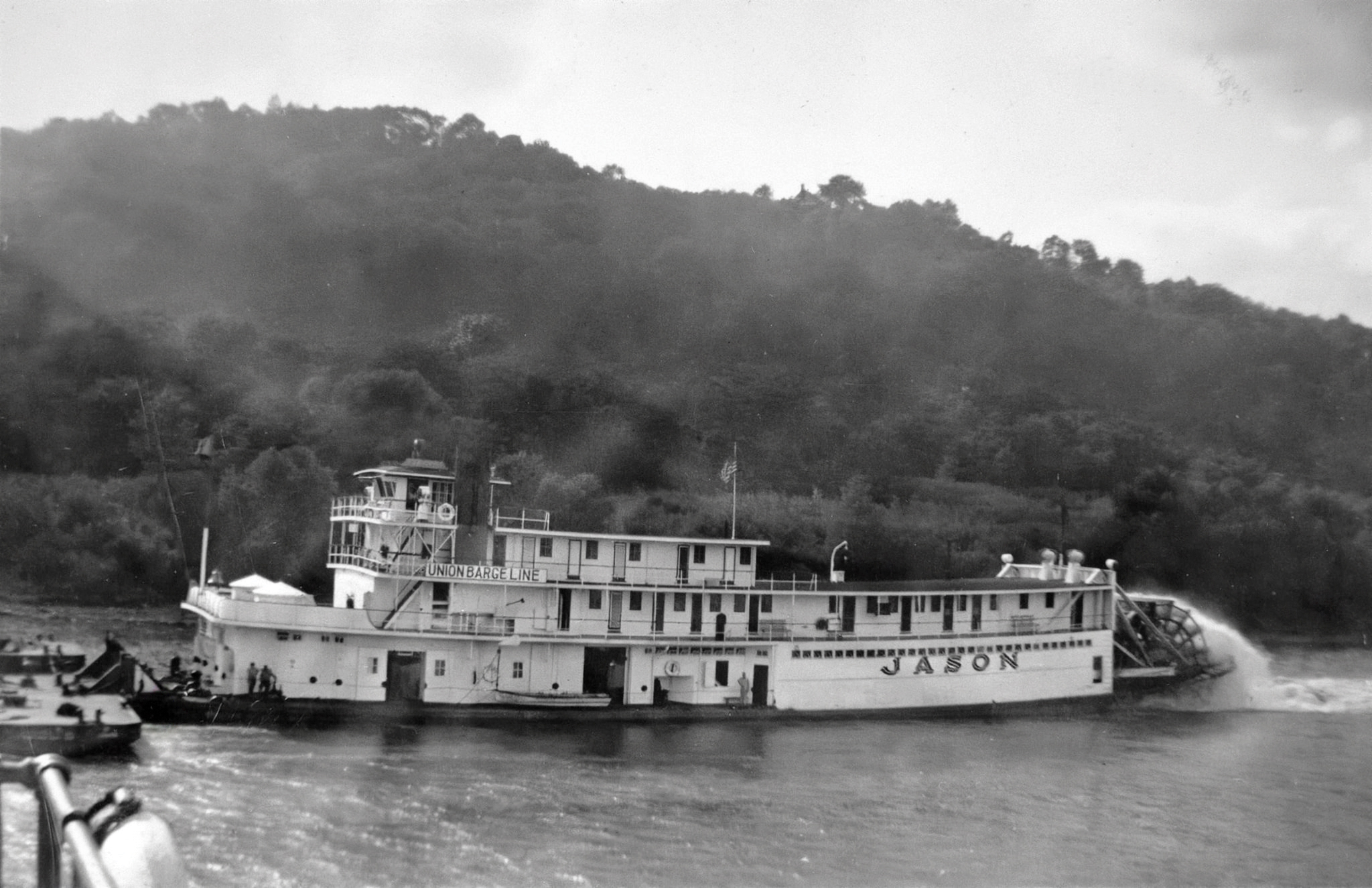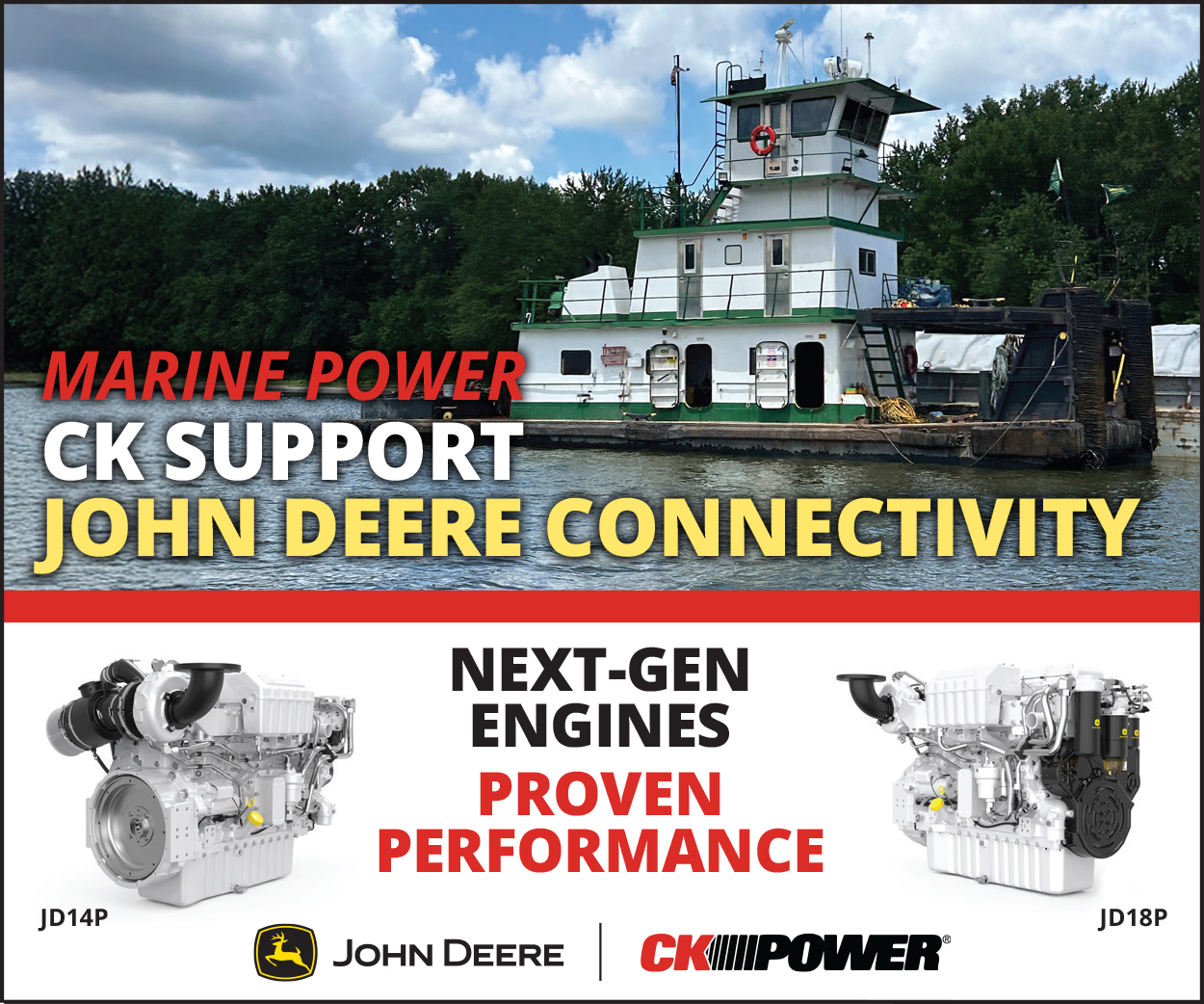In the July 22 and July 29 issues of The Waterways Journal, this column detailed the innovative new diesel towboats Wm. Penn and Ductillite that Dravo built in 1940. At the same time that these thoroughly modern boats were being built, another large towboat of a traditional steam sternwheel design was under construction at the Marietta Manufacturing Company (MMC) yard in Point Pleasant, W.Va. That vessel would prove to be the last of that kind built for the Western Rivers.
In 1939, MMC delivered the steam sternwheel Alexander Mackenzie (Way’s T0085, WJ October 9, 2023) to the new Central Barge Company of Chicago. Initially, it was announced that Central would build two 1,500 hp. sternwheel steam towboats. Ultimately, though, they only took the Mackenzie, possibly because before construction was completed on it, they had purchased the 1,350 hp. twin screw diesel W.A. Shepard from American Barge Line. The Mackenzie came out in May 1939, and MMC announced they were going to build a duplicate of it for stock, or speculation.
The new boat, which was virtually identical to the Mackenzie, was completed in late 1940. It had a steel hull measuring 167 by 37.5 feet, and condensing engines, 16’s, 32’s with a 10-foot stroke. These engines were also of MMC design and fabrication, and they were the same as those provided for the Mackenzie, as well as several towboats built in recent years by MMC and Dravo. There were two Foster-Wheeler boilers, but unlike the coal-fired Mackenzie, these would burn fuel oil. When complete, this last steam sternwheel towboat built for rivers service languished at the MMC yard awaiting a purchaser.
The big new boat had been named Jason. It has been storied over the years that the name signified the months it took to build the big boat: July, August, September, October and November. It is much more likely that the name was selected to honor Jason T. Weissenburger, son of Charles O. Weissenburger, who was the president of MMC from 1930 to 1944. In May 1941, a buyer was finally found for the big new vessel. It went to Union Barge Line (UBL), a subsidiary company of Dravo Corporation that had so recently built the new diesel boats mentioned above. World War II was brewing, which caused shipyard space to be pledged to the war effort, and an excess of cargo was going to have to be moved on the waterways.
The Jason came out for UBL with Capt. Leon Ash as master and Capts. R.F. Rogers and Moten Stanley as pilots. The new Jason was taken to Pittsburgh where tests with the Dravo dynamometer barge indicated that the boat exerted 1,685 push horsepower. It was often found in the Pittsburgh to New Orleans trade for UBL, along with the Wm. Penn. After the war, UBL had several new twin screw diesel boats of up to 2,200 hp. built, and in early 1951 UBL bought the 3,200 hp. Johnny Walker, which had been built by F.B. Walker & Sons, Pascagoula, Miss., and owned by Simpson Towing Co., Charleston, Mo. UBL renamed it Liberty, and in September 1951, the big Jason was sold to Amherst Barge Company.
In October 1951, the boat was renamed Herbert E. Jones to honor the head of the Amherst Coal Company. It was entered in the

coal trade from the Kanawha River to Cincinnati and Louisville with Capt. Charles M. Young as master. In February 1952, the boat was converted from burning oil to burning coal, a very reasonable move since the owning firm was in the coal business. In addition to this, the upper cabin was extended to provide extra guest quarters. Inasmuch as the Jones family was known to be tall (Capt. Charles T. Jones, eldest son of Herbert who was over the river operations, was 6 foot 7 inches tall), this extension was noticeably higher than the rest of the cabin.
In 1954, the Jones suffered an accident where one of the engine cylinders “ran through itself,” meaning the piston ran through the cylinder head. Amherst arranged to purchase the machinery from the Alexander Mackenzie, then owned by the Mississippi Valley Barge Line, and laid the vessel up at Cincinnati. It was towed to Port Amherst on the Kanawha where the machinery was removed, and repairs made to the Herbert E. Jones. The Jones then towed the Mackenzie back to Cincinnati.
Amherst had purchased the steam prop Orco in 1955, renaming it J.S. Lewis and converting it to diesel in 1958. On August 1, 1959, the Herbert E, Jones arrived at Port Amherst and was cooled down for what would be the final time. It was kept intact until 1961, when it was sold to the builder, MMC at Point Pleasant, who announced plans to make it into a shop barge. It was instead sold to interests in the Pittsburgh area that converted it into a restaurant and night club called Thunderbird. It was later acquired by R.J. Brown Towing of Tarentum, Pa., who removed most of the cabins and made it into an A-frame barge. It is the understanding of this writer that it was scrapped in recent years.




